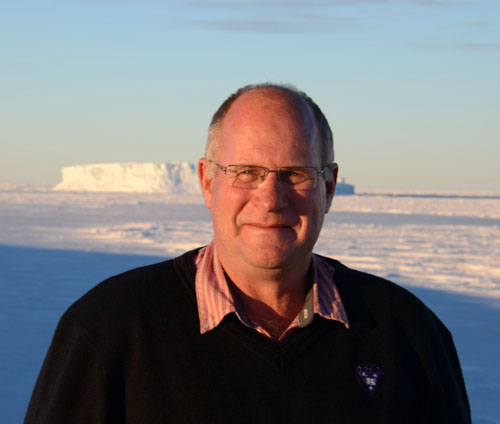![]() Ian Meiklejohn
Ian Meiklejohn
Geographer • South Africa
“The immense scale of landscapes and icescapes, indescribable beauty, and the silence of Antarctica are my addiction”
Ian Meiklejohn is Professor and Head the Department of Geography at Rhodes University in South Africa. He is Principle Investigator of a project titled “Landscape Processes in Antarctic Ecosystems” run in the South African National Antarctic Programme and funded by the National Research Foundation. His research was previously on the deterioration of indigenous rock art in southern Africa, but now focusses on Geomorphology and environmental change and the interactions between landscapes and biota in the Antarctic and Sub-Antarctic.
As a young boy I grew up in the Drakensberg Mountains in South Africa, and discovered that a distant relative of mine was Apsley Cherry-Garrard. A passion with Mountains and the Antarctic was a logical outcome. Ian F Meiklejohn in John Rymill’s British Graham Land expedition had the Meiklejohn Glacier on the Antarctic Peninsula named after him. I am not sure if he is a relative, but the coincidence makes a great story. So with the scene set, my Professor and later friend and colleague, Kevin Hall at University of Natal in Pietermaritzburg, South Africa, was working in the Maritime Antarctic. I was amazingly fortunate to realise a childhood dream and take part in the British Antarctic Survey Mars Glacier Party in 1992/3 with Kevin; our contribution was recognised in the naming of Natal Ridge on Alexander Island. After entering Academe, my involvement in Antarctic research started with projects on Sub-Antarctic Marion Island, which were later extended to Western Dronning Maud Land through the South African National Antarctic Programme. The immense scale of landscapes and icescapes, indescribable beauty, and the silence of Antarctica are my addiction. I have also been fortunate to work in the Swedish Arctic through an association with colleague Jan Boelhouwers from Uppsala University. The Antarctic and Arctic are our global early-warning systems and the interactions of Geomorphology with the climate and biota are a fascination. Many of the answers to the vexing questions around global environmental change are most likely to be found in the Polar Regions. What a thrill it is to pass on my love of the continent to the next generation of scientists and I have been fortunate to be part of several students fulfilling their Antarctic dreams. The only regret is that my wife and children are not able to experience Antarctica with me.
© Le Cercle Polaire – September 2013 – All Rights Reserved

